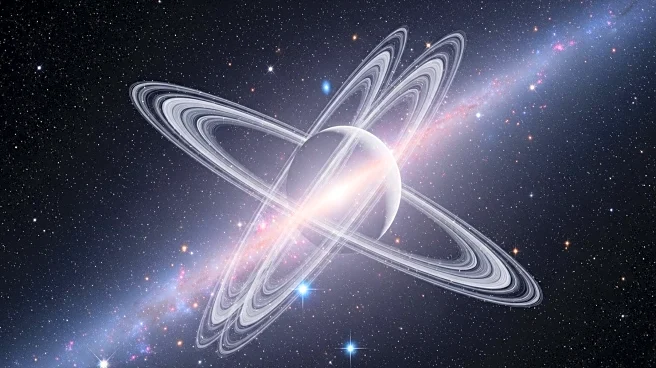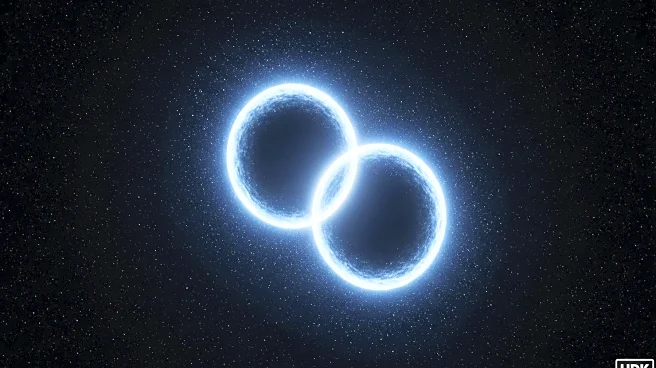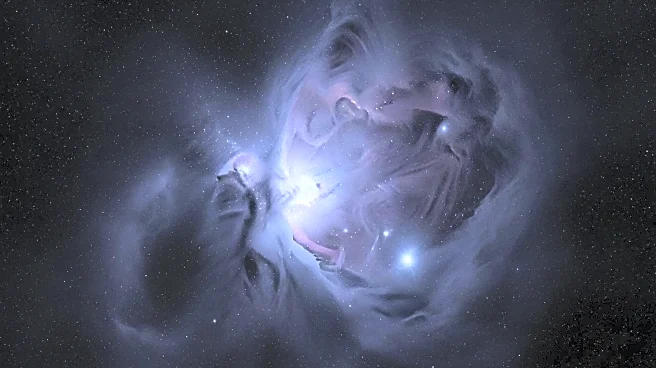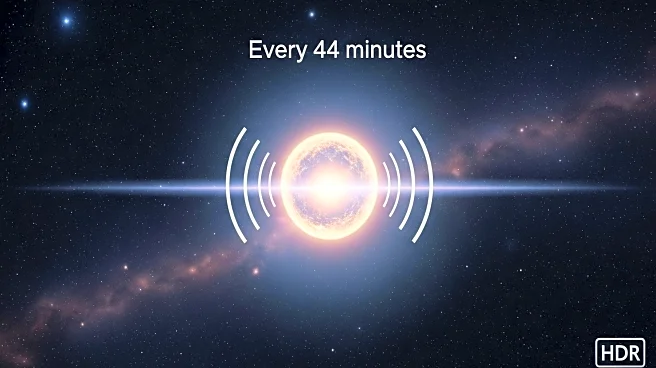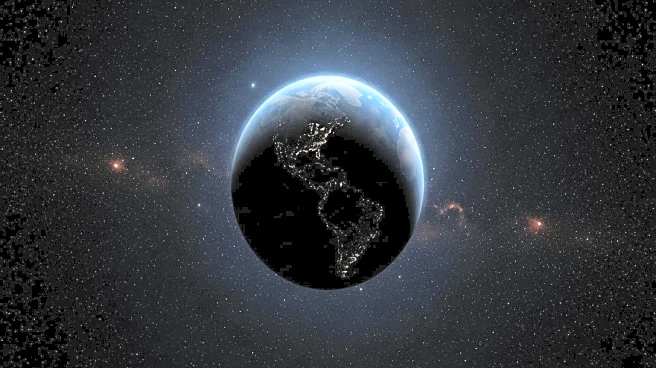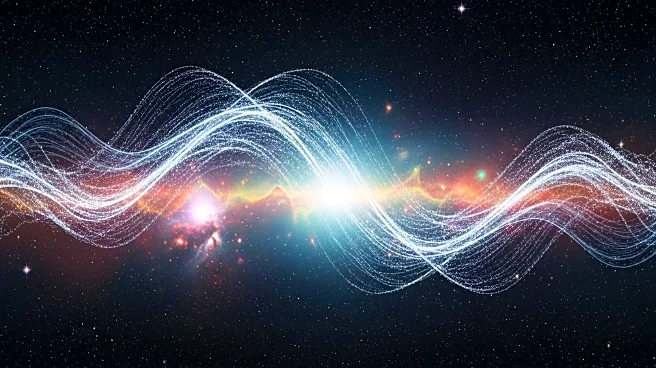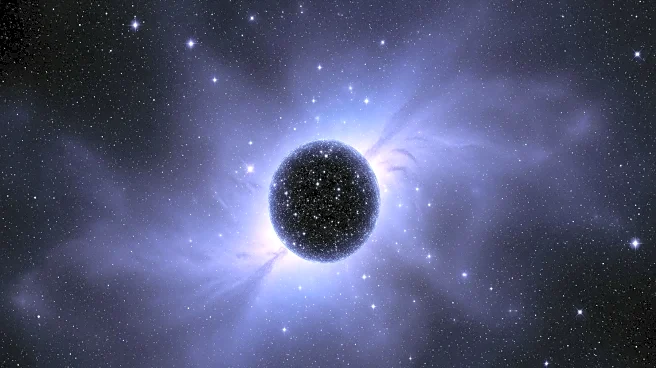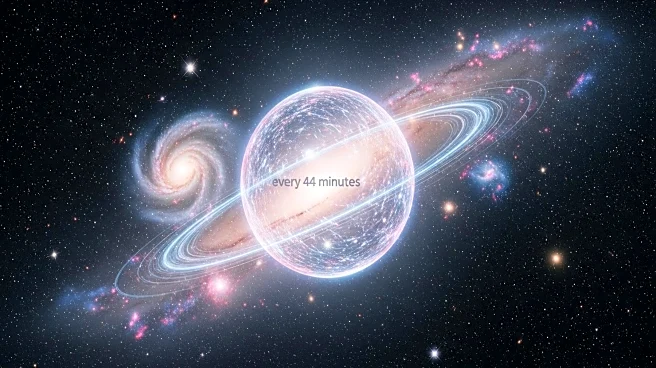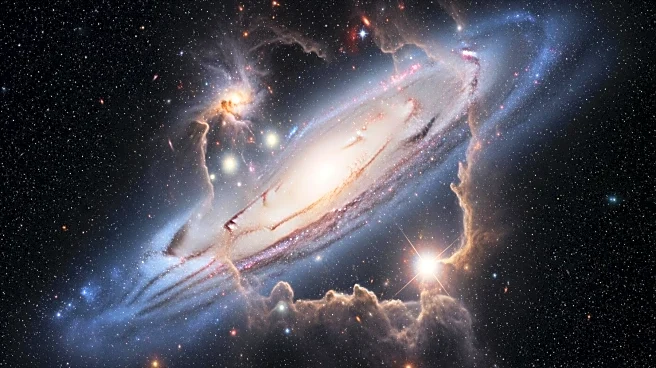What's Happening?
Astronomers have identified a rare cosmic structure known as an odd radio circle (ORC), featuring a double-ring formation, located 7.5 billion light-years from Earth. This discovery, made with the assistance of citizen scientists, marks the most distant ORC known to date. These structures, composed of magnetized plasma, are massive, often housing entire galaxies at their centers. The newly discovered ORC, named RAD J131346.9+500320, is only the second of its kind to exhibit two rings. The discovery was facilitated by the Low Frequency Array (LOFAR) Telescope, which is the largest and most sensitive radio telescope operating at low frequencies. The rings appear to intersect due to Earth's vantage point, although they are likely separated in space.
Why It's Important?
The discovery of this odd radio circle provides crucial insights into the evolution of galaxies and black holes. ORCs are believed to preserve remnants of ancient, violent galactic events, potentially offering clues about how galaxies and black holes co-evolve. The phenomenon may serve as a record of explosive events that shaped galaxies billions of years ago. Understanding ORCs could reveal how energetic outbursts influence surrounding gas and trigger or suppress star formation. This discovery pushes the known boundary of ORCs to nearly half the age of the Universe, providing vital clues about their origins and their link to the broader life cycle of galaxies.
What's Next?
The continued study of ORCs will require the collaboration of citizen scientists and the use of next-generation telescopes like the Square Kilometre Array, currently under construction in South Africa and Australia. This array will allow astronomers to observe ORCs in greater detail, enhancing understanding of the evolution of black holes and galaxies. The SKA, expected to be completed in 2028, will include thousands of dishes and antennas, forming the world's largest radio telescope. This will enable astronomers to survey the entire sky more quickly and effectively, potentially uncovering more ORCs and furthering our understanding of cosmic phenomena.
Beyond the Headlines
The discovery highlights the power of citizen science in advancing astronomical research. By training non-professionals to recognize patterns in radio waves, astronomers can expand the scope of their research and push the boundaries of scientific discovery. This collaborative approach not only aids in identifying rare cosmic structures but also democratizes the process of scientific exploration, allowing broader participation in the quest to understand the universe.
